Written by Taylor Templer, West Central Coordinator
On September 29th YES! teams from across Minnesota gathered at Prairie Woods Environmental Learning Center (PWELC) in Spicer for the 15th annual YES! Fall Summit. Over 160 students and coaches were in attendance representing Yellow Medicine East, MACCRAY, Minnewaska, New London-Spicer, Discovery Woods, Parkers Prairie, Springfield, Westbrook-Walnut Grove, and Sleepy Eye/St. Mary’s. The goal of the day was for students to connect with other students from around the state of Minnesota who want to improve their communities and schools by learning from local environmental experts to complete hands-on projects, and to hear first-hand about eco-related careers in each session.
 The day began with a welcome message from Sydney Bauer, a Biology and Sustainability graduate from the University of Minnesota Morris and Organics Coordinator for Stevens County. Her goal was to get students to think about what they value, why they joined YES! and how they can use that reason to make an impact in their schools and communities. She did this by asking them a series of questions including: “What do you value?”, “What do you think is important?”, “How do you want to grow?”, “How do you want your community to grow?.” The students shared their answers to these questions with one another. One student said “I never really thought about it before but I joined YES! because I care about my friends and family and I want them to live in a community that takes care of the environment.” After the welcome activity students then broke into 6 sessions that included Eco-Projects, Go Clean Energy!, Pollinator Project, Water Quality, Canoeing, and Climbing Wall.
The day began with a welcome message from Sydney Bauer, a Biology and Sustainability graduate from the University of Minnesota Morris and Organics Coordinator for Stevens County. Her goal was to get students to think about what they value, why they joined YES! and how they can use that reason to make an impact in their schools and communities. She did this by asking them a series of questions including: “What do you value?”, “What do you think is important?”, “How do you want to grow?”, “How do you want your community to grow?.” The students shared their answers to these questions with one another. One student said “I never really thought about it before but I joined YES! because I care about my friends and family and I want them to live in a community that takes care of the environment.” After the welcome activity students then broke into 6 sessions that included Eco-Projects, Go Clean Energy!, Pollinator Project, Water Quality, Canoeing, and Climbing Wall.
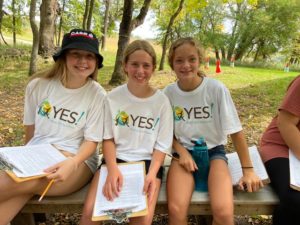 During the Eco-Projects Session, YES! Regional Coordinator, Deb Groebner introduced seven broad categories for team projects. Students chose the topic that resonates with them personally, and then selected the topic they think is most important to people in their community. Next, teams were given a list of water projects from previous seasons and voted to identify one project of interest. Using a target, arrows, bow, measuring tape, and other objects, Deb illustrated how S.M.A.R.T. goals help plan successful projects. Team members then worked together to create a S.M.A.R.T. goal for the water project they identified. The session wrapped up with a brief overview of the Solar Suitcase and Power2Share program, an exciting new opportunity for teams interested in renewable energy!
During the Eco-Projects Session, YES! Regional Coordinator, Deb Groebner introduced seven broad categories for team projects. Students chose the topic that resonates with them personally, and then selected the topic they think is most important to people in their community. Next, teams were given a list of water projects from previous seasons and voted to identify one project of interest. Using a target, arrows, bow, measuring tape, and other objects, Deb illustrated how S.M.A.R.T. goals help plan successful projects. Team members then worked together to create a S.M.A.R.T. goal for the water project they identified. The session wrapped up with a brief overview of the Solar Suitcase and Power2Share program, an exciting new opportunity for teams interested in renewable energy!
Dan Tepfer from Kandiyohi Power Cooperative and Sydney Bauer teamed up to do the Go Clean Energy! Session. Dan provided an explanation on clean energy production, consumption and distribution. Dan also brought a Tesla (Electric Vehicle) to demonstrate how clean energy works in our daily lives. Students got a kick out of the fact that there is storage in the front of the car big enough to sit in! Sydney engaged students by guiding them through the process of putting together a tiny solar car using a kit. Each car was fully operational and with the cooperation of Mother Nature by providing a lot of sunshine, the students were able to test out how fast their cars could go during a race against their peers!
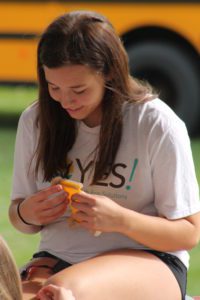
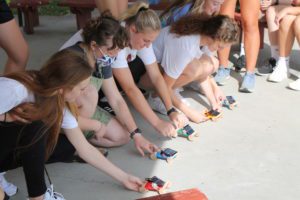
During the Pollinator Project Session, Scott Glup took students through a pollinator plot that was installed in 2018 by BOLD 1st graders with help of Pheasants Forever. Scott taught students the importance of native plants and pollinators, the variety of plant species in the plot, and how to collect seeds in the fall. Students then were able to go out and collect the seeds that they chose to take home with them.
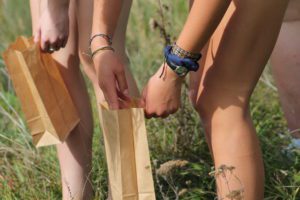
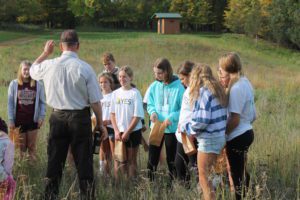
 Students were surprised to find out that water quality really does affect their daily lives in so many ways during the Water Quality session lead by Andy Johnson from the Middle Fork Crow River Watershed District (MFCRWD). Recognizing how water flows and changes the landscape is a great way to help define what a watershed is and what Watershed Districts accomplish. Students learned about different watersheds sizes and the relationships they have with the people and communities within those boundaries, while also learning how Watershed Districts can help to manage and protect the water that is used for drinking, agricultural, and recreation. While learning the saying “you can’t manage what you don’t measure” students were shown different instruments to sample water, what properties to look for within the water, and how to restore or protect areas based on valuable data. By asking a variety of questions regarding water quality and aquatic invasive species the students were able to see how long term planning projects can help protect our bodies of water.
Students were surprised to find out that water quality really does affect their daily lives in so many ways during the Water Quality session lead by Andy Johnson from the Middle Fork Crow River Watershed District (MFCRWD). Recognizing how water flows and changes the landscape is a great way to help define what a watershed is and what Watershed Districts accomplish. Students learned about different watersheds sizes and the relationships they have with the people and communities within those boundaries, while also learning how Watershed Districts can help to manage and protect the water that is used for drinking, agricultural, and recreation. While learning the saying “you can’t manage what you don’t measure” students were shown different instruments to sample water, what properties to look for within the water, and how to restore or protect areas based on valuable data. By asking a variety of questions regarding water quality and aquatic invasive species the students were able to see how long term planning projects can help protect our bodies of water.
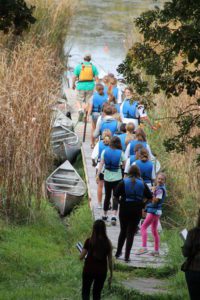
The students also had the opportunity to canoe the Lake Florida sloughs and climb PWELC’s 26 foot mobile climbing wall. The climbing wall taught students to work hard toward a goal and conquer fears by trying something new. Canoeing taught students how to work together in order to get where they want to go.
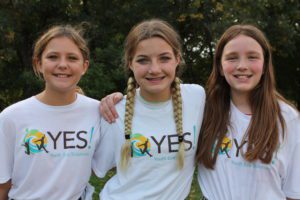
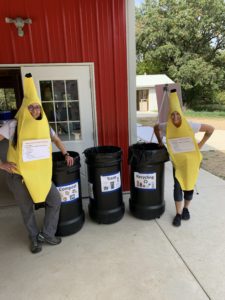 At lunch time YES! Coordinators dressed up in banana costumes to promote the Waste-Less Lunch Challenge, which rewarded students whose lunches produced no trash with an opportunity to select a fun, earth-themed sticker to put on their water bottle.
At lunch time YES! Coordinators dressed up in banana costumes to promote the Waste-Less Lunch Challenge, which rewarded students whose lunches produced no trash with an opportunity to select a fun, earth-themed sticker to put on their water bottle.
A special thank you to the Kandiyohi County AIS Taskforce and Great River Energy for their support to make the event possible!
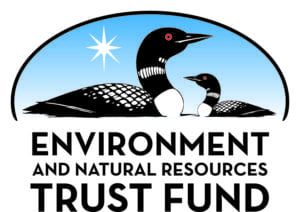 Major support for YES! comes from LYFT Career Pathways, Minnesota Environment and Natural Resources Trust Fund (ENRTF), and Clean Energy Resource Teams (CERTs). Thank you!
Major support for YES! comes from LYFT Career Pathways, Minnesota Environment and Natural Resources Trust Fund (ENRTF), and Clean Energy Resource Teams (CERTs). Thank you!